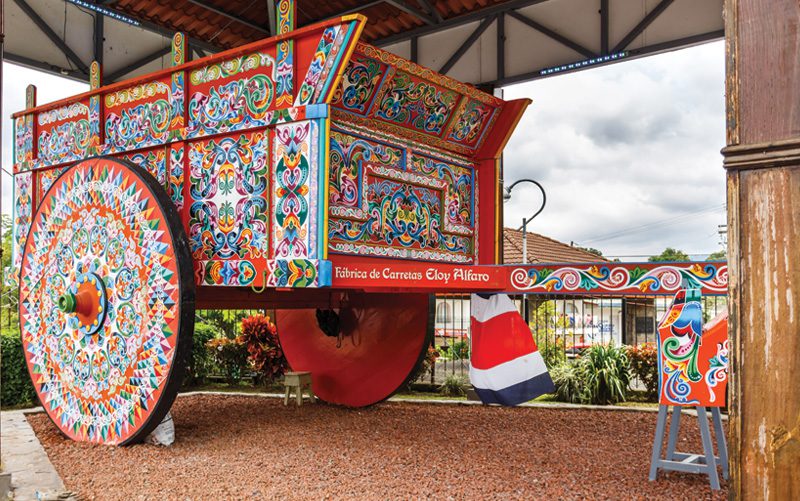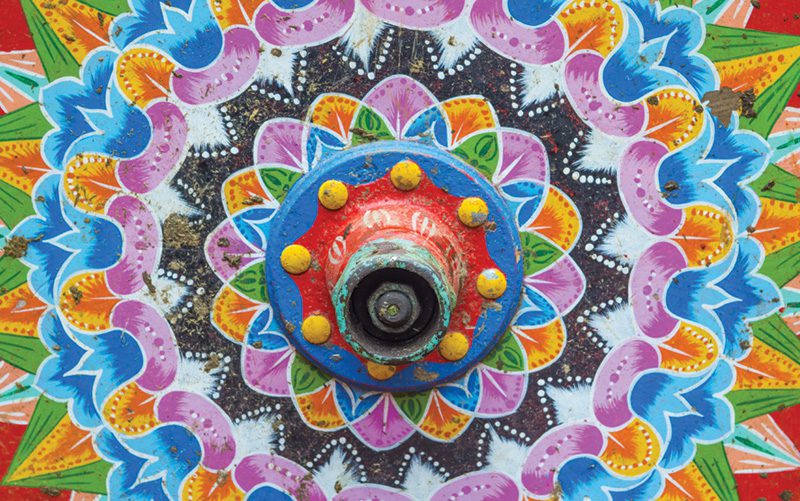Wheels to the World – Ox cart of bygone era a cultural treasure today: Although its golden age in Costa Rica’s export trade history has long since faded, the ox cart remains one of the country’s most important ancestral legacies. As an unmistakable national symbol, it embodies the spirit of work and humility, as if inscribed in the soul of Costa Rican generations past, present and future.
This sense of timelessness was brought to bear from a cultural heritage standpoint in relatively recent times. A desire to revitalize and preserve the traditional use of ox and carts in Costa Rica motivated a research study by Carmen Murillo, Cecilia Dobles and Giselle Chang to carry out an investigation. Sponsored by Costa Rica’s Ministry of Culture and Youth, and UNESCO (United Nations Educational, Scientific and Cultural Organization), this project formed the country’s submission to occupy an exclusive global list of cultural heritage assets. On November 25, 2005, the combined tradition of “boyeo” (use of oxen) and “carreta” (cart) was declared by UNESCO as a “Masterpiece of the Oral and Intangible Heritage of Humanity.”
The ox cart opened doors of progress
to our ancestors.
The agricultural use of boyeos and carretas originated in colonial times. Ox carts provided a transportation vehicle for family members as well as export crops. In addition to tirelessly carrying loads of coffee beans to market, they provided an inseparable link between rural Costa Rica and the outside world. On return trips back home, the ox cart’s turning axles sang a melodious song the oxherd was proud of, carrying the promise of news and goods from overseas.

Ox carts had a presence in the fervor of religious and festive celebrations, and also in political fervor. They figured into some of the most important moments of Costa Rican peasant family lives. The ox cart opened doors of progress to our ancestors. It built our homeland as a primordial tool in the construction of buildings, temples and villages, as well as the harvesting of crops. Its humanitarian service extended to the transportation of sick people. It was also a party to the secret rendezvous of amorous couples, sneaking around to hidden places.
Ornately hand-painted ox carts are universally recognized as an indelible hallmark of Costa Rica’s identity. Whether a tribute to the farm family’s affection, ancestry, location or social status, the practice of transforming plain wood into a canvas of dazzling colors, texture and light became part of the ox cart’s symbolic national destiny. The meticulous craftsmanship that makes each cart a uniquely expressive and beautiful work of art is celebrated and showcased in museum exhibits, parades and festivals throughout the country.

After 1960, the mechanization of agriculture displaced ox carts to a significant extent. However, they can still be found, particularly in high valley regions and steep lands where vast coffee plantations thrive, or in less developed, remote locations. But as functional uses of the ox cart have declined, efforts to raise awareness of its cultural significance have increased. In effect, this former mainstay of locomotion has been “folklorized.” Even when long since replaced by modern engines, the ox cart still travels slowly along the roads. Aromas emanate not only of coffee, but also sugar cane and firewood. The ox cart is the early riser. It is the sun at noon, indefatigable by dusty or muddy roads or virgin mountain trails. It is the indissoluble association of oxen and oxherd.
Download the photo and color!See the article in the magazine!aHR0cHMlM0ElMkYlMkZpc3N1dS5jb20lMkZob3dsZXIlMkZkb2NzJTJGaG93bGVyX21heV8yMDIxX2ludGVybmF0aW9uYWxfbWFnYXpfZDcxZThhYWMwZWRhNTQlMkY0NiUzRmZyJTNEc05qSmtaVE00TXpJek9URQ==Hear and see the story!JTNDaWZyYW1lJTIwc3JjJTNEJTIyaHR0cHMlM0ElMkYlMkZ3d3cuamlnc2F3cGxhbmV0LmNvbSUyRiUzRnJjJTNEcGxheSUyNmFtcCUzQnBpZCUzRDMxNjRlYjkzMDUyZiUyNmFtcCUzQnZpZXclM0RpZnJhbWUlMjIlMjBzdHlsZSUzRCUyMndpZHRoJTNBMTAwJTI1JTNCaGVpZ2h0JTNBNjAwcHglMjIlMjBmcmFtZWJvcmRlciUzRDAlMjBhbGxvd2Z1bGxzY3JlZW4lM0UlM0MlMkZpZnJhbWUlM0U=






